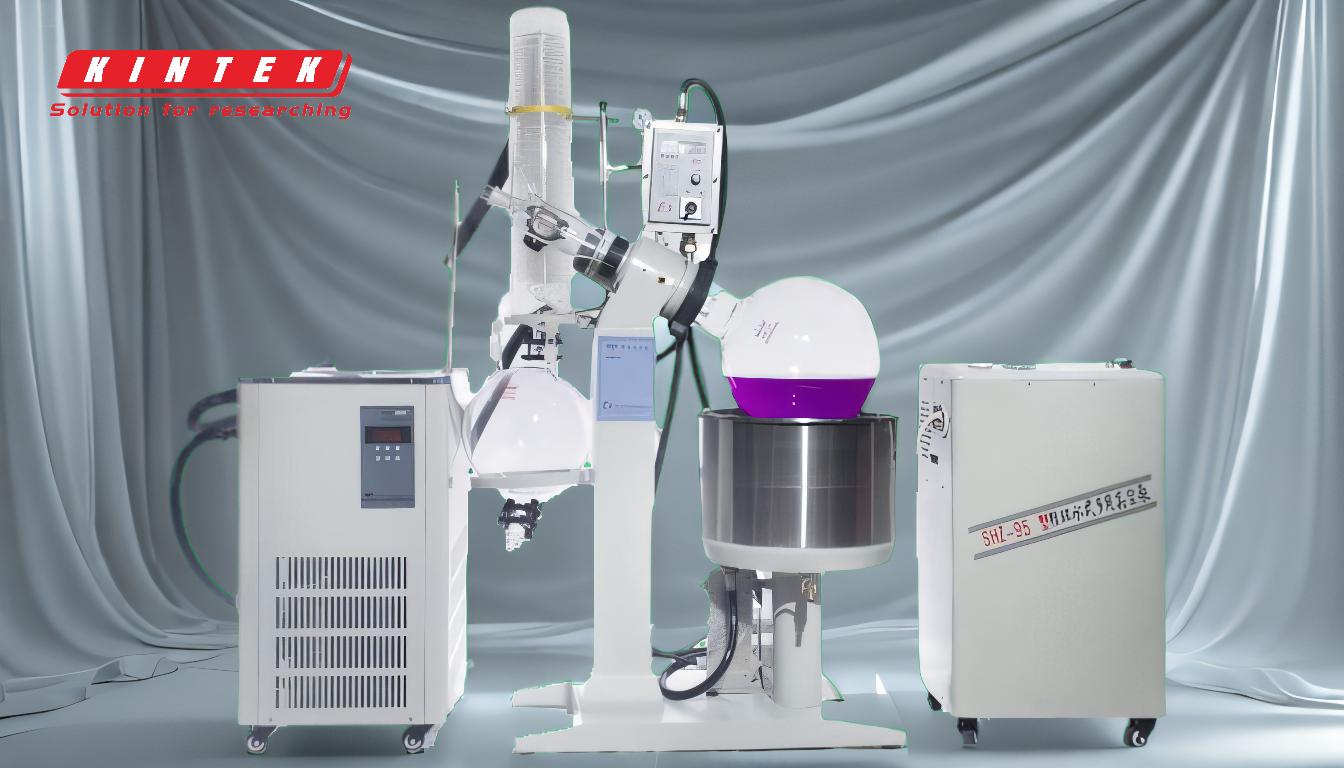Short path distillation is a specialized technique used for separating and purifying compounds, particularly those that are heat-sensitive or have high boiling points. It operates under high vacuum conditions, which significantly lowers the boiling points of substances, allowing them to evaporate at much lower temperatures. The process involves heating the material in a flask, creating a vacuum to reduce pressure, and then condensing the vapors on a nearby surface. The condensed liquid is collected in separate flasks based on its weight, ensuring precise separation of different components. This method is highly efficient for refining complex mixtures, such as cannabinoids or essential oils, and is widely used in industries requiring high-purity products.
Key Points Explained:

-
Principle of Short Path Distillation:
- The core principle revolves around reducing pressure to lower the boiling points of substances. This is achieved by creating a vacuum within the distillation system, which allows heat-sensitive materials to evaporate at lower temperatures.
- The pressure difference between the boiling film and the condensing surface drives the flow of steam. Under high vacuum conditions (as low as 0.001 mbar), the distance between the evaporator and condenser is minimized, ensuring efficient distillation.
-
Process Overview:
- Heating and Evaporation: The material is placed in a boiling flask and heated gradually. The vacuum lowers the atmospheric pressure, reducing the boiling points of the components.
- Vapor Travel: The evaporated vapors travel a short distance to the condensation surface, where they are cooled and condensed back into liquid form.
- Collection: The condensed liquid is collected in separate receiving flasks based on its weight, allowing for precise separation of different fractions.
-
Key Components of the System:
- Glassware: Includes a boiling flask, condenser, and collection flasks.
- Heating and Cooling Systems: A heating mantle or recirculating water heater is used to control the temperature, while a cooling system (e.g., chiller) ensures efficient condensation.
- Vacuum System: A vacuum pump and vacuum trap (often filled with dry ice and alcohol) are used to create and maintain the necessary low-pressure environment.
-
Advantages of Short Path Distillation:
- Efficiency: The short distance between the evaporator and condenser minimizes distillate loss and ensures rapid condensation.
- Precision: Allows for the separation of components with very close boiling points, making it ideal for refining complex mixtures.
- Suitability for Heat-Sensitive Materials: The low operating temperatures protect heat-sensitive compounds from degradation.
-
Applications:
- Cannabinoid Refinement: Used extensively in the cannabis industry to separate and purify cannabinoids like CBD and THC.
- Essential Oils: Ideal for extracting and purifying essential oils from plant materials.
- Pharmaceuticals: Employed in the production of high-purity pharmaceutical compounds.
-
Operational Considerations:
- Temperature Control: Precise temperature regulation is crucial to avoid overheating and ensure the integrity of the distillate.
- Vacuum Maintenance: Consistent vacuum levels are necessary to maintain the low-pressure environment required for efficient distillation.
- Fraction Collection: Proper collection and separation of fractions are essential for achieving high-purity end products.
-
Comparison with Other Distillation Methods:
- Traditional Distillation: Operates at higher pressures and temperatures, making it less suitable for heat-sensitive materials.
- Molecular Distillation: Similar to short path distillation but often used for even more delicate materials, requiring extremely high vacuum levels.
-
Repeatability and Refinement:
- The process can be repeated multiple times to achieve optimal separation and refinement, ensuring the highest possible purity of the final product.
In summary, short path distillation is a highly efficient and precise method for separating and purifying compounds, particularly those that are heat-sensitive or have high boiling points. Its ability to operate under high vacuum conditions, combined with its compact design, makes it an invaluable tool in various industries requiring high-purity products.
Summary Table:
| Aspect | Details |
|---|---|
| Principle | Reduces pressure to lower boiling points, ideal for heat-sensitive materials. |
| Process | Heating, evaporation, short-distance vapor travel, and precise collection. |
| Key Components | Glassware, heating/cooling systems, and vacuum pump. |
| Advantages | High efficiency, precision, and suitability for heat-sensitive compounds. |
| Applications | Cannabinoid refinement, essential oils, and pharmaceutical production. |
| Operational Tips | Maintain precise temperature control and consistent vacuum levels. |
| Comparison | More efficient than traditional distillation for heat-sensitive materials. |
Ready to optimize your compound separation process? Contact us today to learn more about short path distillation!










